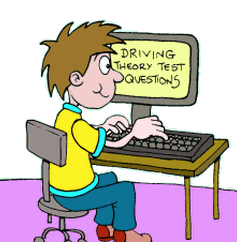Risks when driving: bright or low sun
When the sun is low and bright, it can be very hard indeed to drive. This is because we may have to squint and the bright light can make it hard to pick out objects and to see, sometimes right in front of us.
When coming to a junction or roundabout with bright sun in the eyes there is a marked increase in the number of cars that go into the back of the car in front, perhaps thinking that they have gone around the roundabout when in fact they have not - this is due to the effect of the sun making it difficult to see and make out what is happening.
If there is sun affecting your ability to see properly, then you should use the visor to reduce glare. Also be sure not to look directly at the sun because the bright glare from this can temporary blind you which is extremely dangerous.
Many drivers find it useful to drive with sunglasses on in these conditions, and that can also be good to help you with concentration because driving with your eyes screwed up is tiring and can lead to it being hard to concentrate on the road too. Similarly conditions can occur, in terms of bright glare, when the roads are very wet and the sun then comes out; in these conditions try to slow down.
Related Articles...
Motorway Driving Tips
Driving on a motorway for the first time can be both exciting and a little daunting - exciting as it is something new whilst daunting as you won't have experienced driving on a motorway before...
Insurance for learner drivers
If you wish to learn to drive and you ever plan to use a private car then
you need to ensure the car you are going to use has the appropriate cover.
There are various levels of cover, the...
Road conditions: dealing with fog
Fogs and mists are much more common at some times of the year than others. Particularly in the mornings and in the Autumn time of the year, fog can be commonplace, but whenever it occurs it is...
How does the hazard perception test work
The hazard perception test is the second part of the driving theory test, and it was introduced towards the end of 2002.
There are two parts to the theory test, and the second part of the test...
What causes accidents: tailgating
Driving too close to a vehicle is dangerous for the very simple reason that you have too little time to react should something unexpected happen. And when you consider how many road journeys there...
Oil in your car and oil pressure
Oil is not something that you might think is essential to the operation of a car, but infact it is. Oil acts as a lubricant for the moving parts such as the moving parts of the engine, and it is...
Testing your driving ability
The driving part of the test to assess if you are safe to let on the roads is called the practical test, and it lasts in the region of 40 minutes in total. The purpose is to assess if you can drive...
Hazard Perception
There has been a significant increase in the focus of hazard perception and hazard awareness in the last few years since the introduction by the DSA of a separate hazard perception element to the...
What causes accidents: pulling out
One of the most typically seen accident that happens between vehicles in and around towns and city centres is the situation where two or more roads join each other.
At these there will be...
What are driving offences
Driving offences are what happens when you do not meet your obligations as a road user.
This could be something like not having the correct documentation that you require or something much...
Back to home page of driving theory test questions

